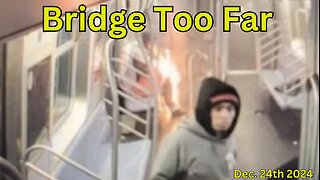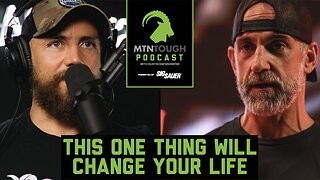Premium Only Content

How to Replace the Fuel Filter on a BMW 335d with Bleeding Procedure
How to replace the fuel filter on a BMW 335d E90. A similar procedure may apply to other 3 series or diesel models as well. This is a 2010 model. A dirty fuel filter may cause a throttle hesitation, flats spots in your RPM range, poor performance, and a drop in fuel economy.
Fuel Filter: https://click.linksynergy.com/deeplink?id=N/DVI*Mr8tI&mid=43304&murl=https%3A%2F%2Fwww.turnermotorsport.com%2Fp-582299-fuel-filter%2F
Foxwell NT530 Scanner (Amazon US): https://amzn.to/3Xdp2Or
Foxwell NT530 Scanner (Amazon Canada): https://amzn.to/3qOdwgk
Website: http://4diyers.com
Patreon: https://www.patreon.com/4diyers
Facebook: https://www.facebook.com/4diyers
Twitter: https://twitter.com/4DIYers
Instagram: https://www.instagram.com/4diyers/
Tumblr: http://4diyers.tumblr.com
Pintrest: https://www.pinterest.com/4diyers/
Tools/Supplies Needed:
-8mm and 13mm sockets
-T20 torx driver
-ratchet
-container
-new fuel filter
-gloves
-standard screwdriver
Procedure:
First is elevating the vehicle up on ramps by the front. This will be a tight fit, especially if you have the lowered version.
Remove the 8 8mm screws on the belly pan under the driver's side. You can kind of see the fuel filter through the holes in the belly pan. It’s located towards the center of the car. Do not run the car empty of diesel as this can cause damage to the fuel system.
You can rotate the belly pan as there is a clip that holds it into place. Removing it completely is also an option but not necessary.
Now the fuel filter is fully exposed. Have a container handy to catch any of their diesel fuel that drains out of the filter when it’s being disconnected.
First is removing the 13 mm bolt holding on the one bracket.
Next is using a T 20 driver to remove the bracket from the filter.
A socket or standard screwdriver can be used to remove the gear clamp for the front hose.
Use a standard screwdriver to remove the clip which holds on the fuel heater.
The retaining bracket can finally be removed, it can be slid up to the line and then pulled off.
Twist the filter and pull the front hose. Once disconnected use the cap from the new fuel filter to plug the port so we don’t have an excessive amount of diesel fuel draining.
Use a standard screwdriver to help remove the heater. Mine was stuck in place, it did take quite a bit of force to remove it. again diesel fuel will come from the side too.
I had the new fuel filter handy so I was able to install it right away without too much diesel fuel draining. Push the fuel heater into the filter on the backside. This filter goes on in only one orientation. You may need to rotate while pushing to help assist it into place. Make sure the seal is in place on the filter.
The rubber damper around the filter was installed from the old filter. It just slides into place.
Now connect the front hose to the front of the filter.
Tighten the gear clamp at the front of the fuel filter.
Install the retaining clip at the fuel heater. Align it with the holes and then push it into place.
Now install the retaining bracket with the Torx screw. Try to position the rubber damper with the bracket in the same place as the mounting hole. Then tighten the torque screw.
Now install the other bracket with the 13 mm bolt and tighten it.
Before putting that belly pan into place, we must bleed the fuel system to ensure there are no leaks. Locate the OBD2 port by the kick panel on the driver's side. Remove the access hatch and plug in the code reader. For this, I’m using my Foxwell NT530 scanner which has BMW specific programming to bleed the fuel system on a diesel. Bleeding the fuel system is highly recommended so you don’t cause premature wear on any fuel system components. The key will need to be turned on for this without the engine running.
We will need to go into the BMW feature on the scanner, then click on service.
Next will be the power train.
Digital diesel electronics.
Adaptations.
And finally bleeding the fuel system. You’ll have to agree to the various prompts and allow the system to run. You will hear the pump run, it will change tone as the air is bled in the system. when done you can then exit and remove the scanner.
Start the engine and check for any leaks before installing the belly pan. Turn the engine off and then reinstall the belly pan. Rotate it back into place and ensure that the pivot point is still properly clipped in.
Then install the 8 mm fasteners, starting them by hand first and finishing tightening after.
After that you are officially done, and the car can be finally removed from the ramps.
Thank you to all those who watch my videos and support my content. Don't forget to subscribe to my channel for future tutorial videos and like my video if you found it helpful. New videos are always being uploaded every week!
© 4DIYers 2013
All Rights Reserved
No part of this video or any of its contents may be reproduced, copied, modified or adapted, without the prior written consent of the author.
-
 57:38
57:38
The Tom Renz Show
2 hours agoMerry Christmas - The Tom Renz Show Christmas
32.3K2 -
 2:59:10
2:59:10
Wendy Bell Radio
13 hours agoThe Bridge Too Far
117K153 -
 1:03:45
1:03:45
Donald Trump Jr.
1 day agoHappy Festivus: Airing Our Grievances and Stopping The Swamp w/Sean Davis | TRIGGERED Ep.201
391K519 -
 1:30:30
1:30:30
Game On!
16 hours ago $7.08 earnedTop 5 things you need to know for Sports Christmas!
50K3 -
 1:58:10
1:58:10
Robert Gouveia
1 day agoMatt Gaetz REJECTS Report, Sues Committee; Luigi Fan Club Arrives; Biden Commutes; Festivus Waste
276K222 -
 1:31:40
1:31:40
Adam Does Movies
1 day ago $15.15 earnedThe Best & Worst Christmas Movies! - LIVE!
106K8 -
 58:10
58:10
Kimberly Guilfoyle
1 day agoAmerica is Back & The Future is Bright: A Year in Review | Ep. 183
195K70 -
 3:03:27
3:03:27
vivafrei
1 day agoEp. 242: Barnes is BACK AGAIN! Trump, Fani, J6, RFK, Chip Roy, USS Liberty AND MORE! Viva & Barnes
265K254 -
 2:05:48
2:05:48
2 MIKES LIVE
9 hours agoTHE MIKE SCHWARTZ SHOW with DR. MICHAEL J SCHWARTZ 12-24-2024
37.9K5 -
 1:14:17
1:14:17
MTNTOUGH Fitness Lab
1 day agoNavy SEAL Dom Raso: The Cold, Hard Truth About Modern Brotherhood | MTNPOD #96
29.7K4